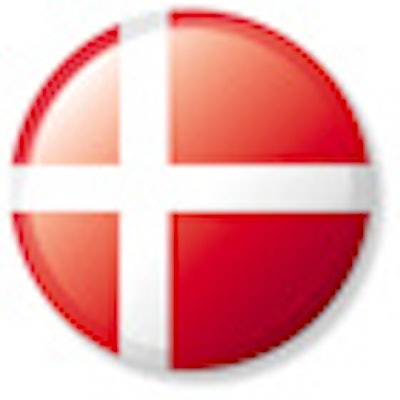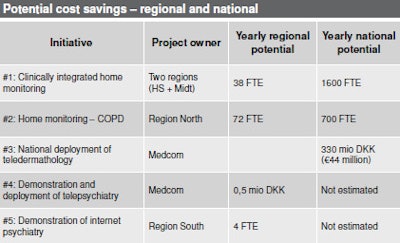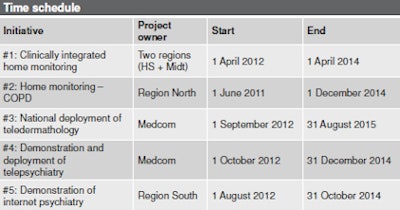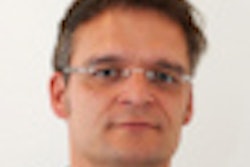
Following Denmark's announcement in August of a raft of new initiatives, the switch to telemedicine is gathering pace as a series of pilot projects prepare to go live. At the core of the scheme is home monitoring for patients with long-term conditions such as diabetes and chronic obstructive pulmonary disease (COPD), and the changes could have implications for PACS and teleradiology users.
Denmark has 1.3 million chronic patients, 400,000 of whom have more than one chronic condition, and this group takes up 70% to 80% of Denmark's healthcare resources. The government's Action Plan for Telemedicine aims to create connected healthcare strategies, and offers large-scale testing to evaluate the implementation of telemedicine solutions for the future, explained Orla Pedersen, product manager at CSC Scandihealth in Ǻrhus, Denmark, who presented the company's eMEDlink system with regard to the Danish initiatives at a Healthcare Information and Management Systems Society (HIMSS) webinar held last Thursday.
 In Denmark, healthcare providers want telemedicine solutions to help overcome staff shortages and curb costs incurred through an increasingly aging population, according to CSC Scandihealth's Orla Pedersen.
In Denmark, healthcare providers want telemedicine solutions to help overcome staff shortages and curb costs incurred through an increasingly aging population, according to CSC Scandihealth's Orla Pedersen.
The 24-month pilot schemes include the clinically integrated home monitoring of 2,000 patients with conditions such as COPD, diabetes, and inflammatory bowel disease, as well as pregnant patients in the Copenhagen and mid-Jutland area, while a second project will cover home monitoring of 1,400 COPD patients in the north of the country. The three other initiatives cover national deployment of teledermatology, demonstration and deployment of telepsychiatry, and demonstration of Internet psychiatry (Web therapy) -- all due to start up this autumn. Tenders to find providers of telemedicine solutions in all five initiatives are planned over the next two years.
In Denmark, healthcare providers have a keen interest in telemedicine solutions to help overcome staff shortages and curb costs incurred through an increasingly aging population, Pedersen explained.
"The pilot for monitoring 1,400 COPD patients alone yields estimated yearly regional cost savings of 4.3 million euros [$5.6 million U.S.], corresponding to annual salary savings of 72 full-time employees [FTEs]. At the national level, annual cost savings would correspond to 700 FTEs or 42 million euros [$54 million U.S.] per year. This COPD-focused initiative will serve to assess the applicability of other long-term conditions," he said.
For the patient, telemedicine obviates the inconvenience of traveling to medical centers from isolated areas and the long waits between appointments due to diminishing numbers of healthcare professionals in the country. In addition, patients may feel more empowered through their own role in monitoring their health, and their ability to book their own conferences. The initial buyers of the solution are likely to include regional governments, hospitals, and general practitioners; another future business model might include private purchases by patients interested in "wellness" and "prevention" services as patients become more engaged in looking after their own health, according to Pedersen.
CSC has already sold 100 eMEDlink terminals to the regional government of Zealand, and plans to participate in tenders that will be held throughout the duration of the five pilot schemes ahead of long-term national deployment.
The system works primarily through a device in the patient's home linking to a device at the relevant doctor's, and will serve both to capture and display the patient's medical data, as well as form a hub for direct face-to-face dialogue.

 Charts courtesy of Orla Pedersen.
Charts courtesy of Orla Pedersen."We have worked hard on HL7 standards so that the device's data capture can be placed directly in the electronic health record (EHR) of the patient. You aren't in the market if you can't do that," Pedersen told webinar participants.
Speaking after the webinar to AuntMinnieEurope.com, Pedersen explained that although teleradiology was not yet a part of the pilot schemes, eMEDlink is a generic solution with high video quality that could be compatible with international standards for transfer and display of medical images. It has potential for interfacing with existing PACS and RIS, just as it could already interface with EHR and medication systems.
"We won't be developing a new PACS within the solution, but can certainly create a tailored interface to existing PACS or other systems in whichever domain is needed," he noted, adding that the main barriers to telemedicine remain cultural rather than technical, and they stem from patient confidence in the security of the information transferred and their ability to use the technology.
Responding to questions raised by webinar participants, Pedersen explained that the exchange of sensitive personal information was not a problem as all data are encrypted and normally stored in a secure professional storage center. The issue was more whether patients "felt" secure using such a system, and whether solution healthcare providers could accept all patients as suitable beneficiaries of such technology.
"We found in an initial COPD trial where most patients were older, in bad health, and not IT literate ... the 24/7 help center received only a few calls. As long as the patient side is done in a user-friendly manner, more or less all patients are able to use these solutions," Pedersen said.


















